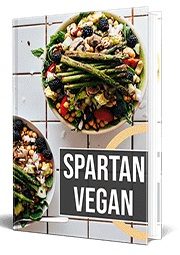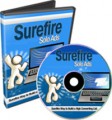
 License Type: Private Label Rights
License Type: Private Label Rights  File Type: ZIP
File Type: ZIP
 SKU: 65400
SKU: 65400  Shipping: Online Download
Shipping: Online Download
Sample Content Preview
INTRODUCTION: WHAT IS A VEGAN DIET?
The people on our modern society are concerned with multiple issues. Health and the environment are two very big ones that are at the forefront. People want to eat well and lessen their environmental impact. Threats of global warming and obesity run are two of the biggest concerns.
Some people decide they want to tackle both at the same time. Making the choice to become a vegan is a decision that is made just as much for health reasons as well as environmental and ethical ones.
A Vegan diet is simply food that is prepared within the vegan specifications so that it supports that lifestyle.
SO, WHAT DOES IT MEAN TO BE VEGAN.
Vegan is a subset of vegetarianism. There are several different types. Some vegetarians still drink milk and/or eat eggs. Not vegans. They are the strictest form and don’t make allowance for ANY animal products in their diet.
It is by far the most challenging form because people take a lot of things for granted. Eggs and milk, for example, are common baking ingredients. So, substitutions need to be made if a vegan is going to be able to eat baked goods.
WHAT MAKES FOOD VEGAN OR NOT?
In order for food to be strictly vegan, it needs to adhere to certain criteria. It is important to note that there are a lot of hidden ingredients in foods. It is especially important to watch out for these if you are going to strive for a vegan diet.
- Vegans don’t eat animal products or byproducts of animal products.
- They also don’t consume things like milk and eggs.
- True vegans also don’t eat fish.
- Don’t forget that bees are an animal so vegans also can’t eat honey, royal jelly, and bee pollen supplements.
- There are also plenty of hidden ingredients to look out for that tend to make their way into food including gelatin, lard, and whey.
If you are a new vegan, making all of these changes may seem overwhelming. But, after you’ve been eating and cooking the vegan way you’ll be an old pro.
WHAT THIS EBOOK WILL COVER
There’s no doubt that a vegetarian diet, particularly a vegan one, can be great for your health. However, with the popularity of health food stores due to the fact that many are looking to improve their health, it’s easier than ever to enjoy a satisfying vegan diet. This eBook will teach you how to do that.
- The basics on how to cook vegan food the right way.
- An overview of typical ingredients used in vegan cooking.
- A list of hidden ingredients to avoid while eating a vegan diet.
- Also includes information on how to stock a complete vegan pantry so you can prepare vegan dishes everyday without a hassle.
- Will cover basic cooking techniques needed to create a variety of satisfying meals.
- How to put together a complete vegan meal while getting the right balance vitamins, minerals, and nutrients for your body.
- What to do if you have special nutritional needs such as those who have diabetes or high cholesterol.
- Recipes so you can get started cooking right away.
As you can see, there’s a lot of information to take in on how to enjoy a vegan diet. This eBook is designed to teach you everything you need to know.
1. TYPICAL INGREDIENTS IN VEGAN COOKING
As you know, vegan cooking is cooking that is done without meat, fish, eggs, or byproducts of any of these things. In order to support a vegan lifestyle, extra care needs to be taken to make sure that none of these ingredients makes it into the food.
We take certain things for granted, such as using eggs while baking. Well, eggs are not allowed during a vegan diet. And even though the vegan lifestyle is increasing in popularity, packaged vegan food are often hard to come by. To solve this problem, many vegans opt to do their own cooking.
This chapter will focus on several different kinds of ingredients. First, we’ll learn how to replace milk and eggs with things that are vegan friendly. We’ll also cover information on other ingredients that are used as well as animal byproducts to watch out for.
- License: Private Label Rights
- Category:Audio & Videos
- Tags:2023 Ebooks Private Label Rights





